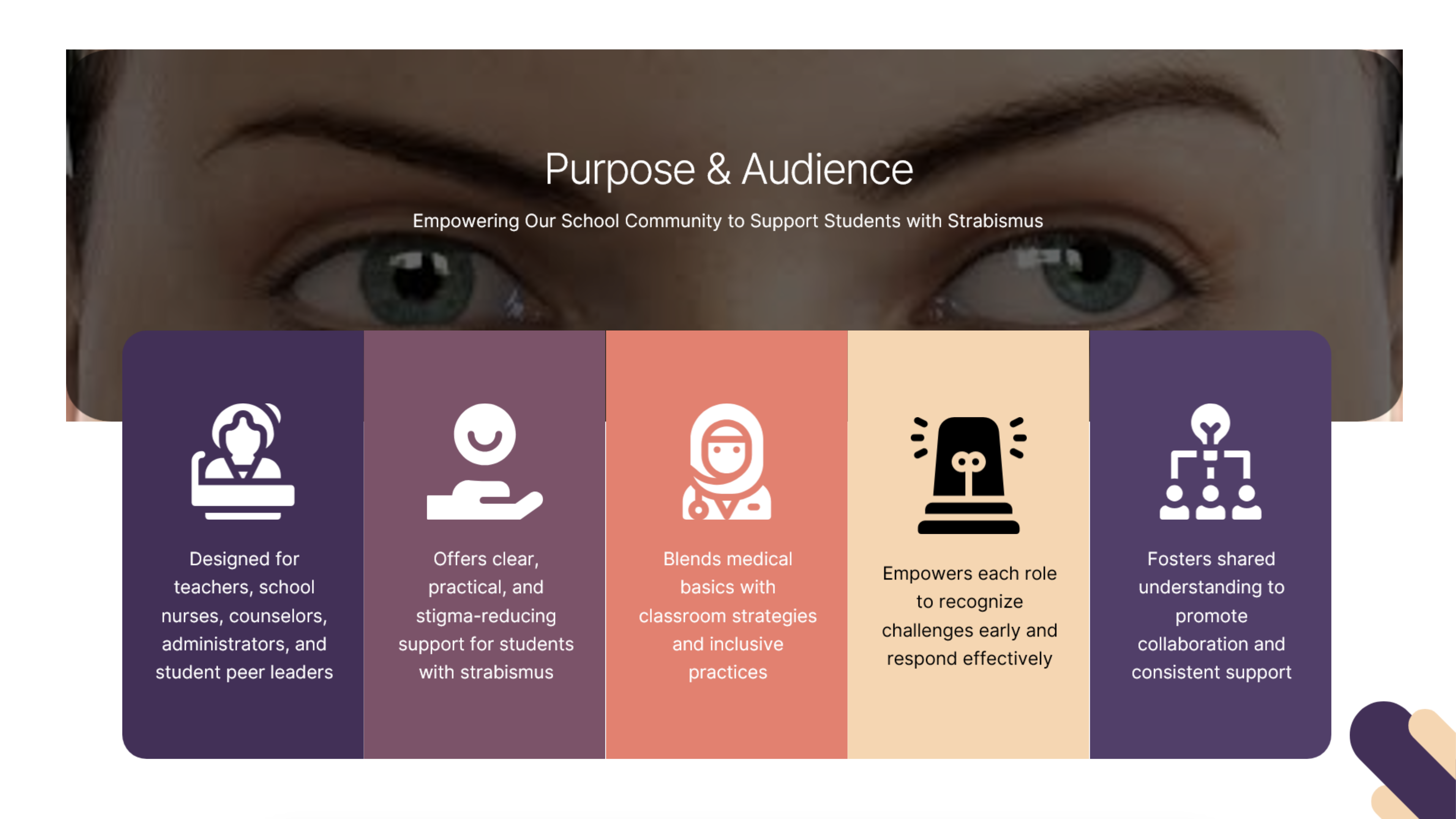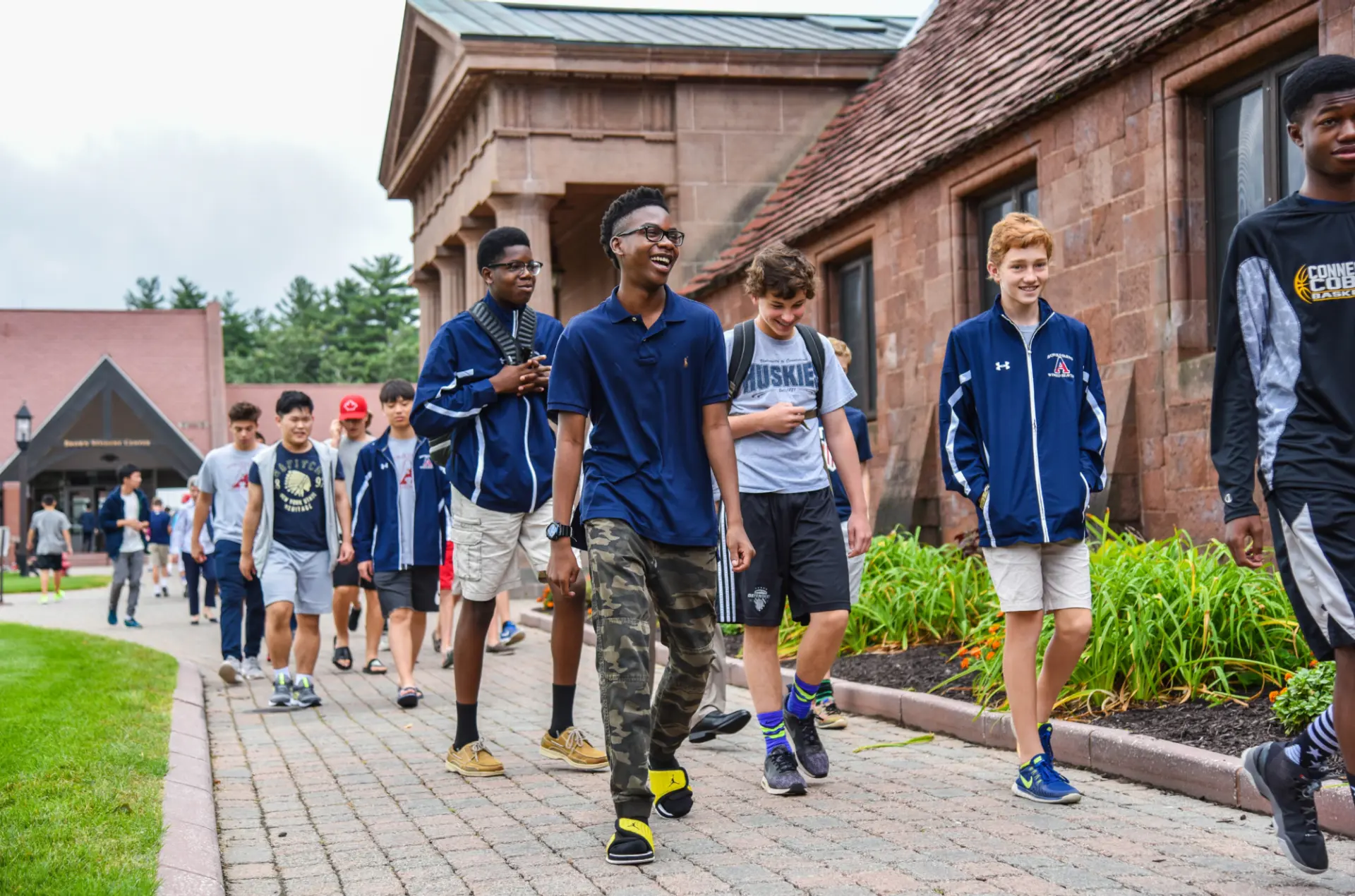NOV 17 2025
AIP Highlight: Strabismus Awareness and New Treatments
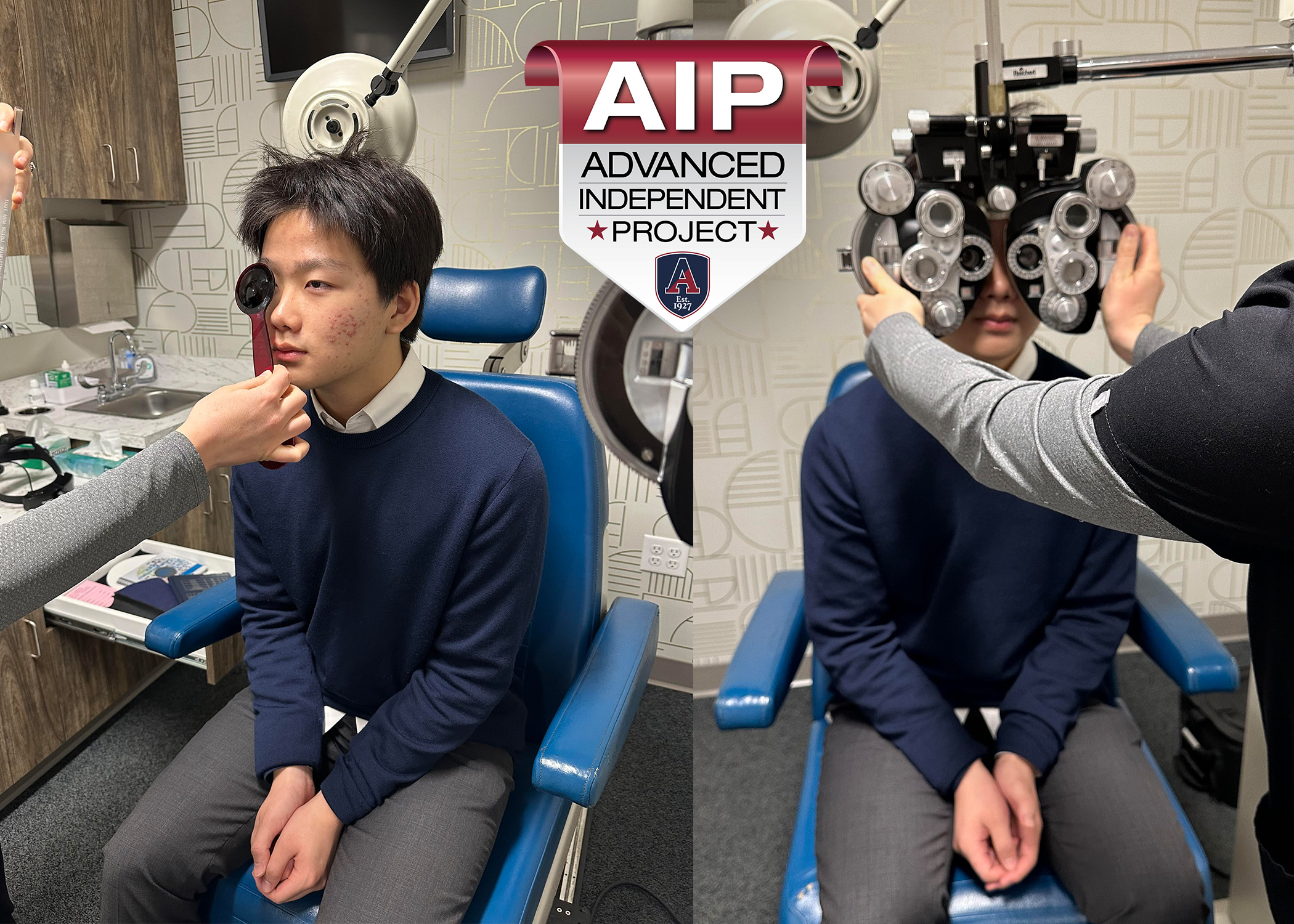
Sungwoon “Ron” Jung ’27 — Strabismus Awareness and New Treatments
At four years old, Sungwoon “Ron” Jung ’27 was diagnosed with the inhibiting eye condition strabismus. For the next seven years of his childhood, he had to wear an eye patch for eight hours a day. At 11, he underwent surgery in an attempt for a more permanent solution. Even after surgery, however, there have been lingering issues that made learning and socializing more difficult—as is common for people living with strabismus. Inspired by his personal journey with the condition, Jung is utilizing the Advanced Independent Project (AIP) program at Avon Old Farms School to find better solutions, raise awareness, and provide support for other children dealing with strabismus.
What is strabismus? It’s a disorder in which one or both eyes are misaligned and do not look at the same object at the same time. Not all misalignments are the same. Esotropia is when one eye turns inward and exotropia is when one eye turns outward. Hypertropia is when one eye is lower and hypotropia is when one eye is higher than the other. These conditions can be constant or intermittent.
Symptoms of strabismus can range from minimal imbalance of eye strength to blurred vision, headaches, and more. These are only the physical symptoms. Children with strabismus often feel more anxious, lonely, or self-conscious due to their condition. They also may struggle in class due to difficulty focusing, inability to copy notes from the board quickly, and increased fatigue due to eye strain while reading or studying. 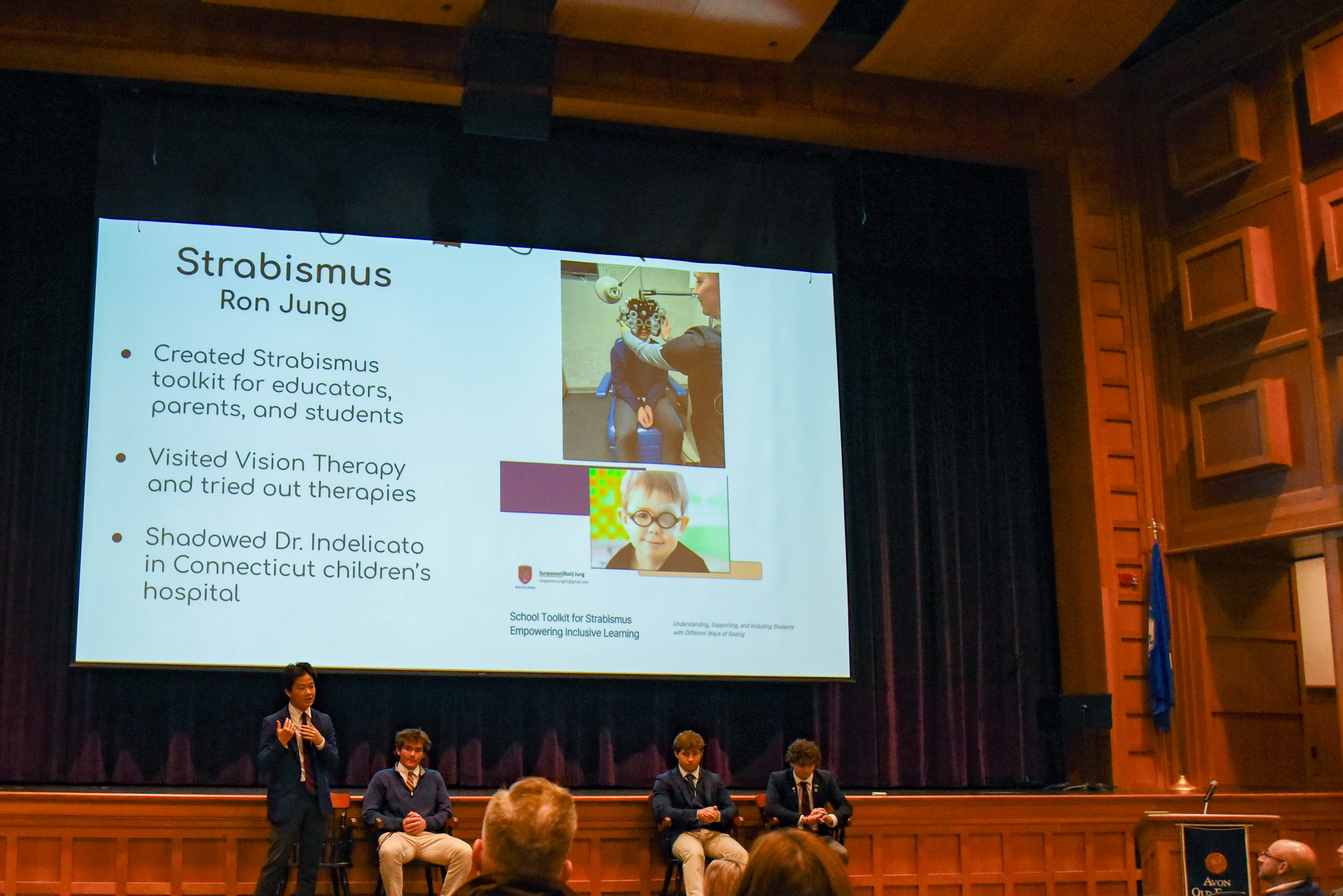
Approximately two to four percent of children are affected by the condition. Strabismus can be cured in the early stages of life with non-surgical practices such as glasses or eye patches if addressed early enough, with further surgical intervention possible if needed. However, these treatments can often be expensive, ineffective, or inconvenient, and they often don’t even fix the root cause of the issue.
The lack of effective treatment options is only one of the problems Jung has found for those dealing with strabismus. There is also a general lack of awareness about the condition. “When I talk to people, they don’t know much about it,” Jung says.
He began by writing a research paper entitled, “The Need for Increased Awareness and Institutional Support for Strabismus,” which was published in a recent edition of Curieux Academic Journal. The paper explored the disadvantages faced by people born with strabismus, including hardship within school and social life, perceived intellectual deficiency, and future impact on overall life satisfaction. An excerpt from the paper’s introduction reads: “While people simply try to minimize the condition and turn a blind eye to it, implications and ramifications quietly continue to bubble under the surface. Although it can be treated in the early stages of life with medical means such as eye patching and correction therapy, many children experience difficulty due to a lack of proper institutional support for this condition. This is significant because the problem not only shapes early life experience but can have lasting repercussions into adulthood as well.”
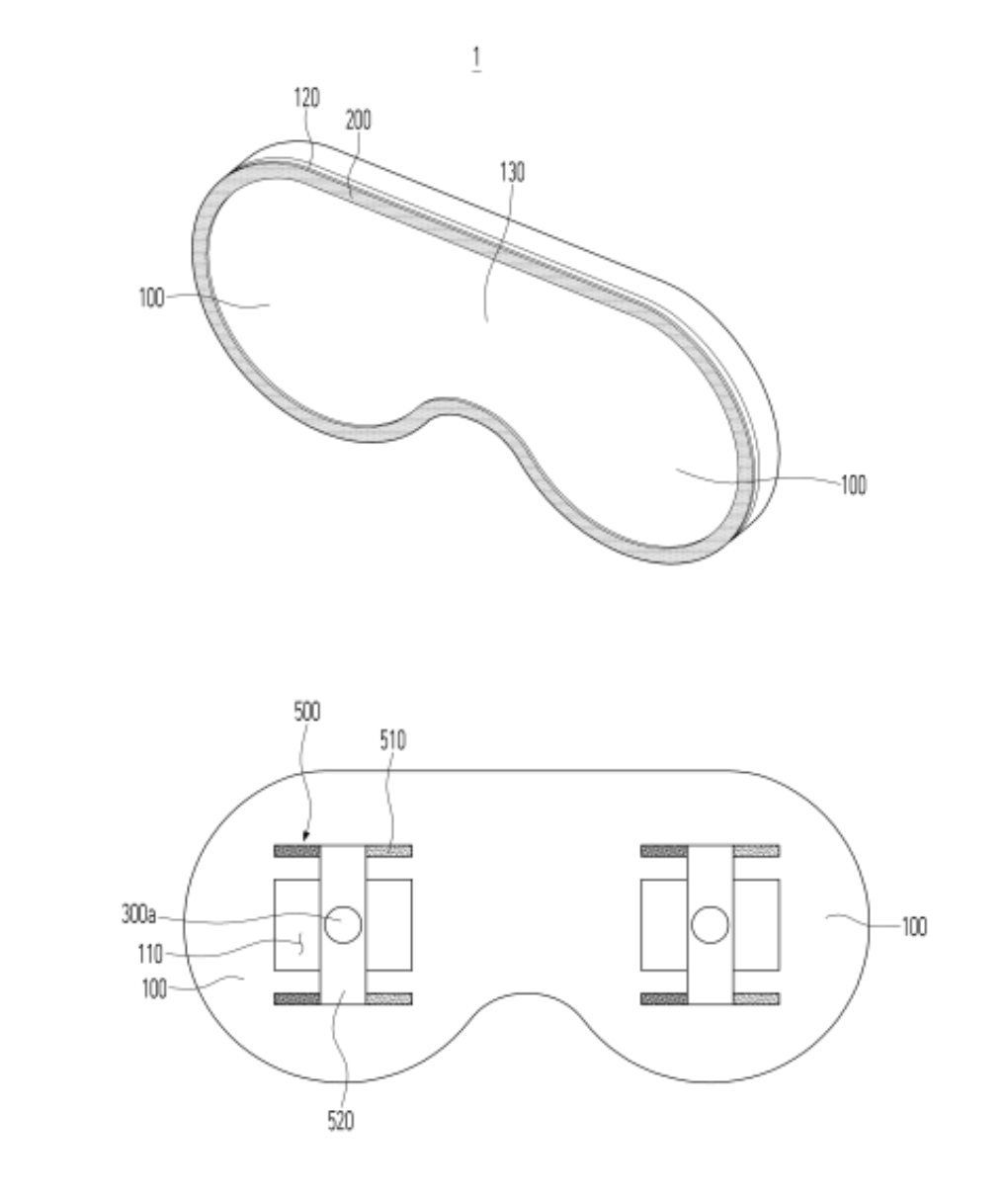
After submitting his research paper, Jung began working on the next phase of his project: a new and improved eye patch. “The eye patch I had to wear was really uncomfortable, and it only offers a weak, temporary solution,” Jung explains. As the head of the Environmental Club at Avon, Jung also didn’t like how the temporary eye patch creates unnecessary waste.
With other club and school work to deal with first, Jung needed to find time to work on his strabismus efforts. Luckily, Avon Old Farms offers boys this chance through the AIP program. Like all students who participate in an AIP, Jung had every afternoon between classes and dinner to work on his project. This fall, Jung used this time to continue to work on his invention and further his awareness campaign.
Jung’s invention is a strap-free, skin-adhesive eye mask designed for comfort and for treating strabismus. Instead of a headband, each eye has a soft, breathable patch that sticks around the eye with a hypoallergenic medical adhesive. The sticky ring sits on a replaceable film, so when adhesion weakens or gets dirty you swap that ring—keeping the main patch clean, reusable, and gentle on skin. The strap-free design eliminates pressure on the scalp and ears, avoids hair pulling and slip, and supports long wear.
It improves on much more than just comfort and wearability. Jung’s invention also offers two different treatment methods. First, in the optical mode, the patch can hold a small prism lens directly in front of the pupil. Because prisms bend light toward their base, precise placement lets the system redirect incoming images so the two eyes aim at the same target, reducing double vision and encouraging proper alignment. A simple cover on the patch opens to use the prism or closes to fully block light for rest or occlusion therapy. Second, in the active mode, tiny electrodes on the patch read natural eye-movement signals (EOG) and a thin control module interprets them in real time. Based on the detected misalignment pattern, a micro-electrode array delivers very gentle electrical muscle stimulation (EMS) to specific extraocular muscles, helping “re-educate” them toward normal alignment.
Jung’s eye patch even has built-in tracking and an accompanying smartphone app so that users can track their eye condition and fine tune treatment. His version only needs to be worn for around two hours a day, opposed to the eight hours needed with existing patches. Jung currently has a patent pending for his invention.
While he waits for the patent office, Jung has kept busy this fall with the other components of his AIP. Throughout the season, Jung has visited and shadowed multiple vision therapy centers or eye doctors, including sitting in on two different strabismus surgeries. He also created a strabismus “toolkit” to support young people with the condition. The toolkit is an informational packet that Jung plans to distribute to local schools and vision therapy centers. It provides insight into what the condition is, what it looks like, what treatments are available, and how to support afflicted students or colleagues. “I thought it would be cool to make an impact here at school and in the surrounding area. It will be especially good for little children because it’s easier to fix at a young age.”
Although the fall season of AIPs is wrapping up, Jung isn’t finished. “I’m trying to create a community of awareness and support back home in Korea and in my city, Busan. I’ve been in touch with some of the local politicians and vision therapists on potential Zoom seminars,” Jung says.
He adds that he’s not done with AIPs either. “After having this experience, I would want to do even more because it was very helpful. I’m looking into what I could do next season.”
More News
|
|
-
Featured Alumnus: Steve Lewis '73
Steve Lewis ’73 has dedicated most of his free time in the last several years to raising awareness of veteran-led causes, and he brought his advocacy to AOF this past Veterans Day.
-
Latest Student Athletes to Celebrate Collegiate Commitments
Avon Old Farms College Athletic Commitments
-
Captain's Corner: Varsity Soccer
This week, we sat down with Leo Miranda ’26, one of the captains of the varsity soccer team this year, to learn more about his role in their successful season.

